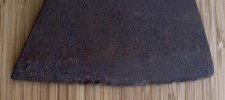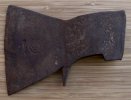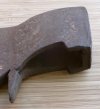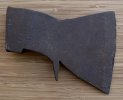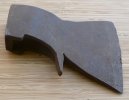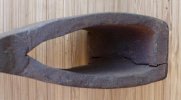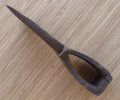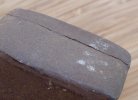Well,Sir...As a blacksmith,i'd say that it's rather unlikely that a crack would be caused by a house-fire,say,or any other situation involving higher temperatures...(unless one really imagines something fairly rare such as an Entirely ill-informed individual who'd Burn the remnant of an old haft out of the head,and subsequently plunges the still-hot head into water,or other cooling medium...).
Many axes we see are similarly damaged,and the majority get this way from 3 possible causes:1.Getting beat-up,used as a splitting-wedge,et c.(unlikely,as the damage to the poll is slight,if any).
2.Improper Heat-Treatment,embrittlement of material,and subsequent failure during more/less normal use-also unlikely,as a German producer would almost never allow this to take place(and on a stamped product at that...).
3.The most common cause is simply the expansion of a well-wedged haft,if from the very dry environment the axe was suddenly transported into very wet(as in lost outside,ending up in standing water,et c.
However,even though that the whatever degree of pitting also agrees with the latter theory,it still doesn't mean that the axe has Not been burned.
The simplest way to test for it would be to test for a Relative differential in hardness between the poll,say,and anywhere within say 1/2" of the cutting edge.
With a CORNER of a file(NOT using a file as in filing),(a decent,new-ish file from a reputable manufacturer),try to plow,or dig,working away from yourself,a scratch.
It needs to be done kinda/sorta forcibly,attempting to sink the sharp corner into material(it will leave a scratch-mark,but a small one.on the poll end it can be done inside the eye).
IF any heat-treatment still remains,by doing this deeply/forcibly enough,you Will feel the difference in hardness.....(and,if so,then it's Very unlikely that this axe has burned).
I'm sorry to go on and on,by NO means i'm suggesting that it'd be worth it....i've only an academic,metal-head's interest in the matter...But,if the original HT remains,then by welding/brazing/soldering the crack,one may return this head to it's functional state,or...(whatever it is that the collectors do with axes...

Best of luck,in any event!


